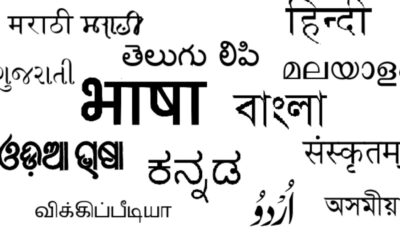Imagine you are a middle aged man living in rural India. For years now, you have seen the government health sub-center behind your home shut. When it occasionally opens, it is for a short time and seems like it is only for name sake. But when you or your friends/family falls ill, the doors of sub-center are locked. The nearest health center is about 20 km away. There are two buses that ply on the route. You or your wife cannot afford to lose your daily wage by opting to travel far away.
In this situation you see a couple of choices – wait out the sickness, if it gets better in a few days no harm done, if not you wait some more. The older people will advise you based on acquired wisdom of treating fevers, cysts, whatever is your sickness. Or you make the tough choice of getting on the bus and paying a visit to the Sub-district hospital. From your past experience of a government facility, you can’t say how long you will be waiting before the doctor sees you, that is if he is in that day. Your neighbour tells you about the temple priest who has magical cures and will do away with the buri nazar that is hovering over your family and causing mayhem. But you are forewarned, he will ask for a sacrifice of a goat or chicken based on the whims of the gods and his perceived magnitude of your problem. Since you don’t have either you will end up purchasing them for a sum of upto 5000 rupees. A steep sum for your family. So essentially you will end up trading either your family’s health, your savings, your peace of mind, or all.
So when a highly subsidized good quality clinic run by certified doctors and nurses opens up 1 km away from your house and you still don’t take your sick child there it baffles me. As part of my work at the AMRIT clinics run by Basic HealthCare Services in south Rajasthan, I had come across numerous instances where multiple members in a single family were bed ridden, or wasting away, or the family was pushed into debt by dubious priests and quacks. They approached the clinic in the last stages of their illness when disease had progressed to more than one body system, and chances for complete recovery were bleak. This proved to be a big obstacle in providing effective healthcare. To better understand the factors that drive decision making in seeking healthcare I spent some time talking to different groups.
Those conversations revealed very horrific details of practices followed in the villages surrounding the clinics. I learnt about different care providers some who relied on prayers, some others on questionable portions and powders, and still others on charms. It was insightful to learn what drove one to chose a provider over the other – the types of symptoms, the past experience of the sick person and his or her family.
Meghlibai, a community volunteer shared about the treatment for inflamed tonsils locally available, “the old lady will put salt on one of her fingers and push it right down the infected throat. When the salt touches the throat it burns. Sometimes she may even scratch the white infected portion to remove the white patches, and it bleeds.”
Bhulki another young mother shared her experience when she was breastfeeding her child. She had an accumulation of milk in one breast and suffered from sever chest pain “My mother-in-law told me that I shouldn’t feed my child which lead to more pain. Eventually the milk had to be drained out with a syringe.”. Applying a hot iron to any swelling, or infected boil was common. These painful solutions to mostly simply treated conditions made my blood boil with fury. Why did they still go to unqualified priests and healers?
Until I dug deeper this question still confused me. The first reason I learnt was normalization of certain illnesses. Malnutrition is so rampant and common, 3 out of every 4 children are undernourished, that parents do not see their child any different as compared to their peers. This means that they do not seek care till the disease has progressed to an advance stage. Another reason for this behavior is that culturally, diseases like chicken pox, measles, or any illnesses that manifest as boils on the skin, are seen as apparitions of a goddess, and so form of medicine will cure them. In fact no attempts should be made to cure it. It just has to run it’s course. This is especially harmful in young children.
The advice of neighbors and relatives plays a large role in the decision making surrounding health of any member of the family. Traditionally, younger persons and women have no autonomy in choices for their health or that of their children. Old parents and husbands have authority. Older members of the community are drawn towards traditional and locally available remedies over contemporary systems of medicine and direct the younger people down that path too. While local remedies are helpful in commonly occurring conditions like a simple cold and cough, for serious infections home based remedies do not suffice. And lastly, the most important contributing factor to preferring unqualified local healers over certified doctors is ‘Trust’. When the question is your family’s life you only place it in the hands of those you trust. Past experience at the hands of government run health centres close that as an option for many.
After hearing the communities voices on the subject their decisions now make sense. I was not right to be furious at the choices they make. They only do the best they can for their families. These insights have also helped in shaping the counselling messages at the clinics to encourage ‘Early and Appropriate Care Seeking’.




0 Comments